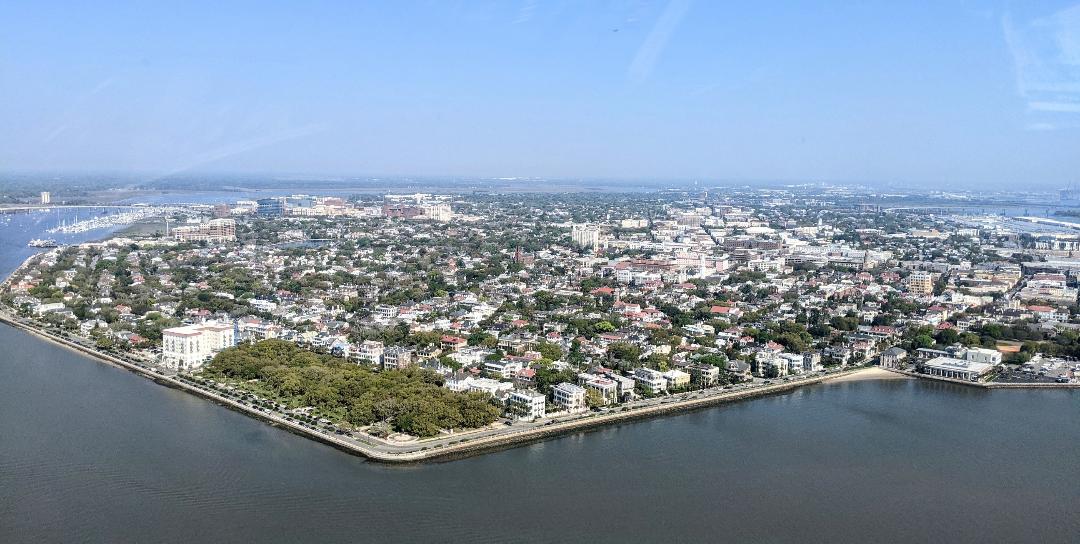
Charleston, SC
A city full of Enchantment
Cobblestone streets peaking out of modern-day asphalt; Horsedrawn carriage next to gas-powered cars; upscale restaurants with modern food fair in the same buildings that once held 1700’s prestigious parties of the elite. Charleston mixes old-world charm with today’s upgrades.
Establish in 1670 on the Ashley River’s west banks, Charleston, named Charles Town initially after King Charles, became the first city colonized in South Carolina. A decade later, it moved to its current location on the water, where it became a leading port in trade. It grew and became a wealthy city with rice and indigo. Fast forward a few hundred years later, and you can still see the southern charm of the new town can still be seen throughout downtown. Rowhouses, gardens, architecture, and history can be seen around every corner to draw you back into the beauty of the past.
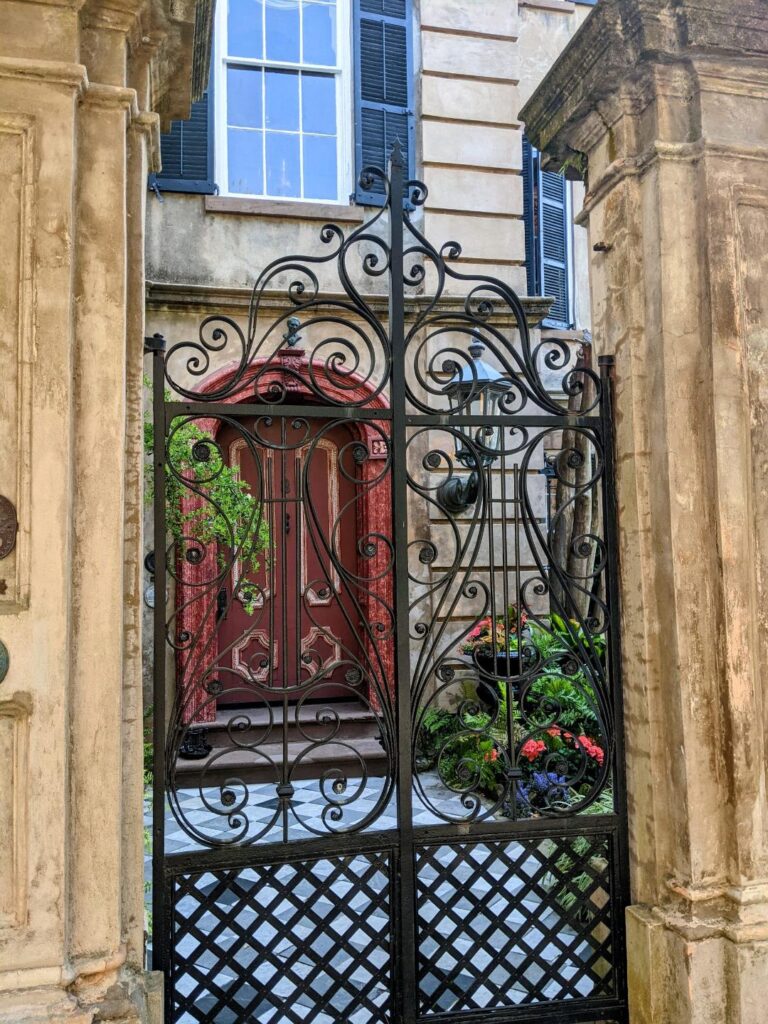
We enjoyed a day walking around downtown, learning about the history, and visiting a few local landmarks. To see, learn, and understand Charlestions history, I would suggest spending two days downtown exploring to city. Historical landmarks are posted in front of every house, it seems, telling you the story of the past. Each street has its tale linked to history and other places such as King Street. Once called the King’s Highway, King Street connects Charleston to Boston, going through multiple states.
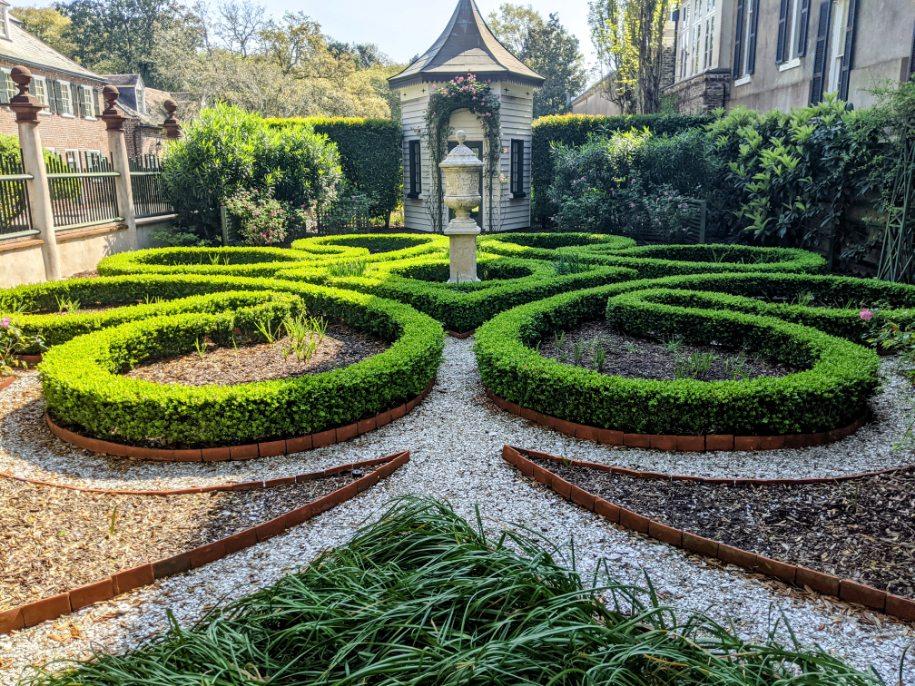
We saw beautiful gardens that are meticulously maintained. One such garden, called the Shamrock Garden, is located on 8 Legare Street. Although the history of the Shamrock Garden is relatively unknown, the house next to it has dated back to 1818. 8 Legare Street house was home Cleland Kinlock Huger, who build the Legare Street house from Italian Renaissance and Villa influences. Huger was well known for being a planter, and you can see the results in the garden behind the beautiful rod iron gate at the villa’s entrance.
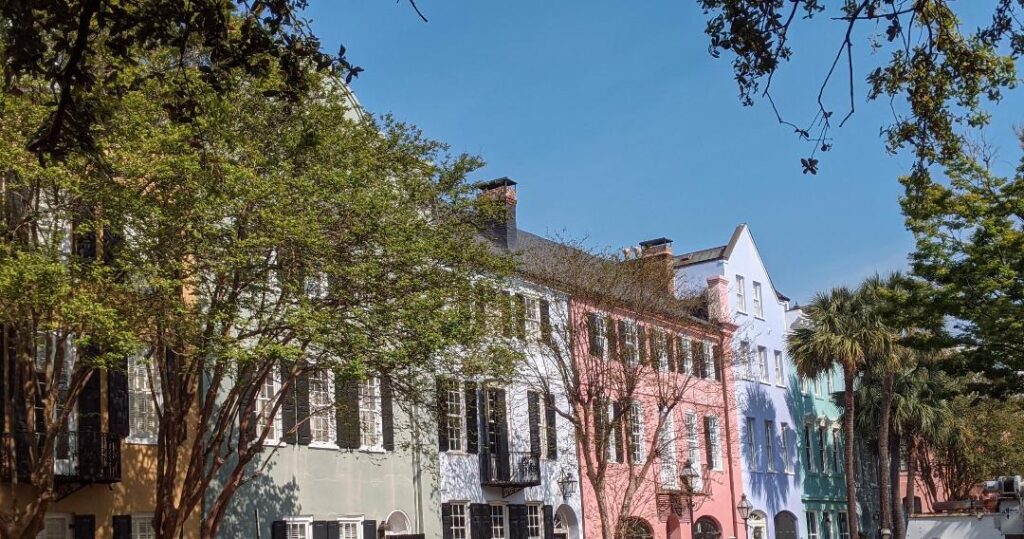
After visiting the Shamrock Garden, we made our way to East Bay Street, boasting Charlestons’ most iconic destinations, Rainbow Row. These houses were built around 1740 and were originally used by merchants. The merchants would run their business on the ground floor and live on the top floors. After the civil war, these houses fell to economic times until the 1930’s when Dorothy and Judge Lionel Legge purchased a few places and renovate the homes. Dorothy also decided to paint the house’s pastel colors to help brighten up the street and make it look nicer. Ever since, the house owners have maintained the pastel colors and have been named Rainbow Row.
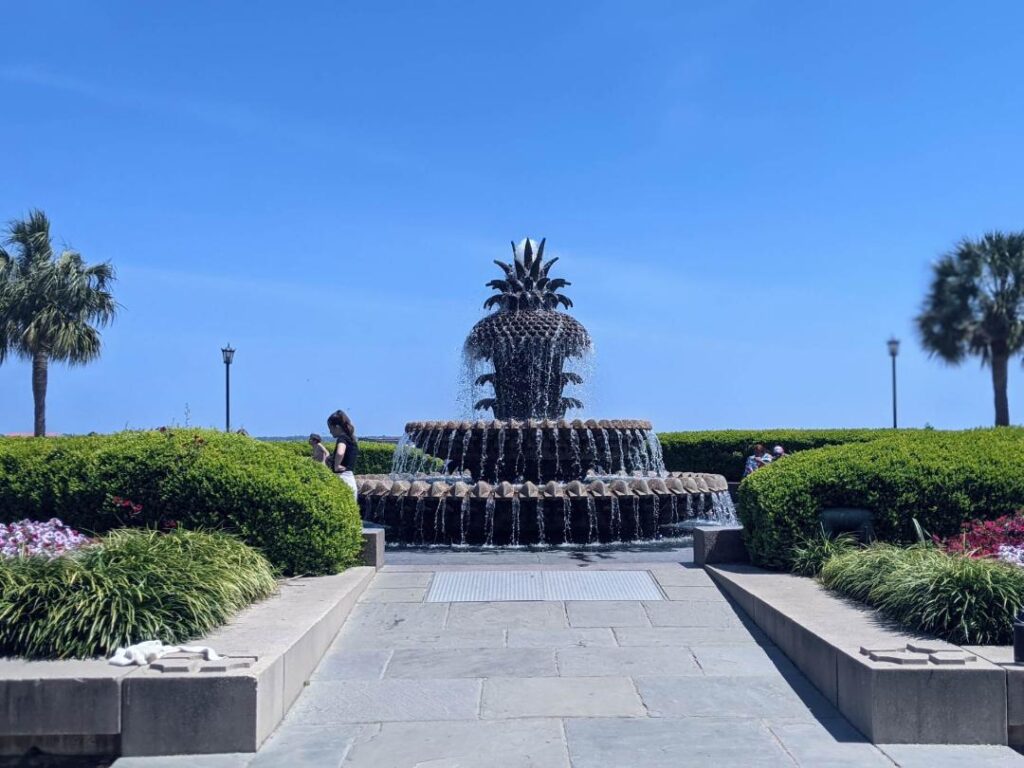
Another significant landmark in downtown Charleston is the waterfront park. The park is a beautiful open area with trees arching to cover the walkway, lush green areas great for a picnic while enjoying the ocean breeze, and the iconic Pineapple Fountain. This is area is a great location to enjoy an afternoon outdoors, let the kids run around, or enjoy some ice cream. There is also a splash pad area for those hot summer days for the kids to cool off and enjoy more outdoor fun. An excellent draw about Charleston is how active a city it is and the number of outdoor activities in so many unexpected places.
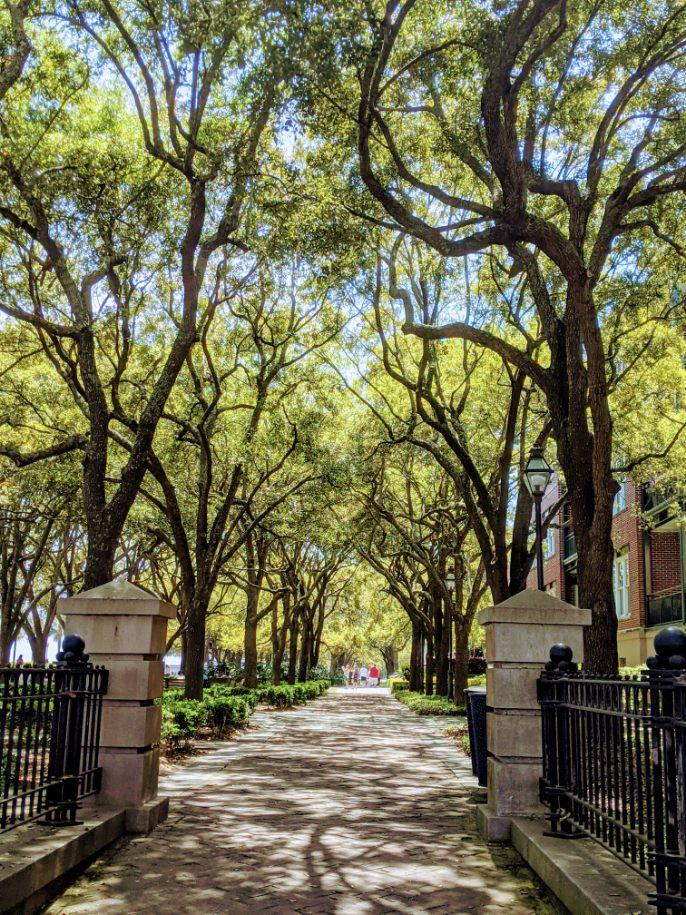
The last place we visited was the Charleston City Market. The market, built-in 1859, was first used as a placed to purchase food for plantations. Today, the market is multiple buildings linked together covering four city blocks that house local vendors selling handmade and unique goods. A main attraction at the market is the men and women who continue to weave sweetgrass baskets like their ancestors did hundreds of years ago. It’s captivating to watch these vendors’ activity practice their art at the market while browsing the variety of baskets they have for sale.

We closed our day with an evening horse-drawn carriage ride around downtown. We learned more about the buildings, restorations, and housing market of Charleston. We were told houses and constructions 75 years or older are not allowed to be torn down unless it is from a natural disaster. People enjoy buying, restoring, and preserving the different houses inspired by Spanish, English, Irish and Italian history found throughout Charleston streets.
An interesting fact about the carriage rides is each ride is given a number at a small white hut just outside of where the rides start. The number is given to the tour guide and indicates which zone they will be touring for the next hour. This helps to alleviate carriage congestions in the same places and ensure each ride is unique, so tourists learn more about history.
Charleston seems to be a magical place, seemingly balancing the history of the past with the ever-evolving ways of the future to keep this city a thriving tourist destination for all ages. A few days are just not enough time to experience all the wonder this city has to offer. We will be visiting again in the future to learn, explore, and dive deep into the history of a growing city.

Travel Inspired Meals Part One:

Dogwood Hills Guest Farm
You May Also Like

Fresh, Flavorful, and Simple: How to Make the Best Creamy Avocado Shrimp Salad
May 2, 2023
Summer in a Sauce: Sweet Tomato Basil
February 2, 2024
18 Comments
Alison
We haven’t had a chance to REALLY visit Charleston. So far, we’ve just passed through. But after reading about all of the beauty and history in the city, I’d really like to go back and spend some time there. I also think that ending your day with a horse-drawn carriage ride is ideal. Thank you so much for sharing your adventure!
Carey M
I’m glad you enjoyed the post. This is our second trip and we still have so much to visit. The walking tours are a great way to get an overview of the city and then explore solo.
Stacey Billingsley
I loved reading this and remembering our brief stay in Charleston a few years ago! I loved everything about the area, and I can’t wait to go back someday. If I’d known how much we’d like it, I would have planned for a longer stay. I love the pineapple fountain. Thanks for reminding me of a great trip!
Carey M
I’m glad you have great memories of Charleston. Its a city where are need at least four day to explore.
Leeanne
It’s been ages since I’ve visited Charleston. You’ve reminded me how wonderful this city is. I need to visit again real soon.
Carey M
Its one of our favorite cities to visit. Great for families.
kmf
Charleston, SC looks so charming and full of enchantment! My husband was stationed here back in the day and I’ve never visited so would love to check it out.
Carey M
I hope you are able to visit. Its a great place to vacation.
Marianne
Charleston looks absolutely beautiful! We drove through briefly, but didn’t have time to stop, unfortunately. Looks like somewhere we may have to revisit!
Carey M
Charleston is a very pretty city with so much to offer. Plan to spend a few days just downtown.
chase Manderino
Charleston sounds like a fabulous place to visit. I’m thinking girls trip!
Carey M
Its a great destination for a girls trip.
Barbara
What a charming experience. Looks like a lovely city to visit and explore!
Carey M
We had a grat time.
Heather Jeanne Jandrue
Charleston, SC has been on my list for a while. It looks like such a great place for a girl’s trip.
Carey M
Its perfect for a girls trip. There is something for everyone to enjoy.
Cindy
Charleston is high up on my US travel list! Your post makes me excited to visit and explore.
Carey M
Its a great place to place to visit.